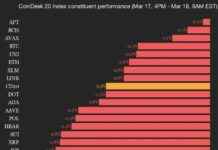The Basel Committee on Banking Supervision has officially released its final disclosure framework for banks’ crypto exposures and made targeted amendments to its cryptoasset standards to tighten the criteria for certain stablecoins to receive preferential regulatory treatment. The Committee, part of the Bank for International Settlements (BIS), has been working on the framework for more than a year and these standards are set to come into effect on January 1, 2026.
The updates aim to enhance transparency and ensure a consistent regulatory approach in the digital assets field. The new disclosure framework, known as DIS55, requires banks to provide detailed information on their crypto activities through standardized tables and templates. This includes qualitative descriptions of their crypto-related business and quantitative data on capital and liquidity requirements. By standardizing these disclosures, the Committee hopes to improve market discipline and reduce information gaps among market participants, contributing to greater market transparency and stability.
In addition, banks must share how they assess risks and classify these assets, as well as provide data on their crypto exposures and related capital requirements. The framework also includes a new definition of “materiality” for certain crypto-assets and sets thresholds for when banks must disclose their exposures. Banks are also required to report average daily values for their crypto holdings to give a more accurate picture of their risk levels.
Despite industry feedback, the Committee maintains that banks should report credit and market risks for tokenized assets separately. The amendments to the prudential standard for crypto-assets focus on tightening the criteria under which certain stablecoins can receive preferential “Group 1b” regulatory treatment. These changes aim to clarify the regulatory framework and promote a consistent understanding of the standards across jurisdictions.
The Basel Committee has also made technical amendments such as removing certain detailed requirements and clarifying the scope of disclosures. The Committee emphasized its commitment to monitoring developments in the cryptoasset markets and adapting its regulatory framework as necessary to address emerging risks. This ongoing commitment ensures that banks’ engagements with the cryptoasset market remain robust and in line with regulatory standards.














